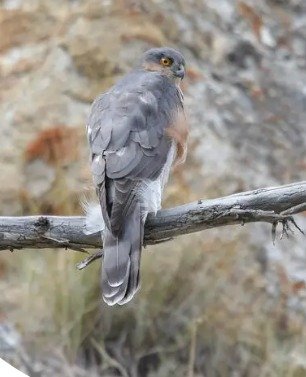
What Hawks can you see in Germany? There are 3 different species of Hawks that you might encounter in Germany. Read this article to see pictures, hear their sound and get great information about where and when you can spot all Hawks in Germany.
Germany, a land of tales, castles, and enchanted forests, is more than just its architectural marvels and historical narratives. Above its ancient woodlands and sprawling meadows, the sky is painted with majestic hawks, each narrating stories of valor, migration, and survival. As we journey through the German skies, let’s get acquainted with these magnificent raptors.
Let’s jump into the article.
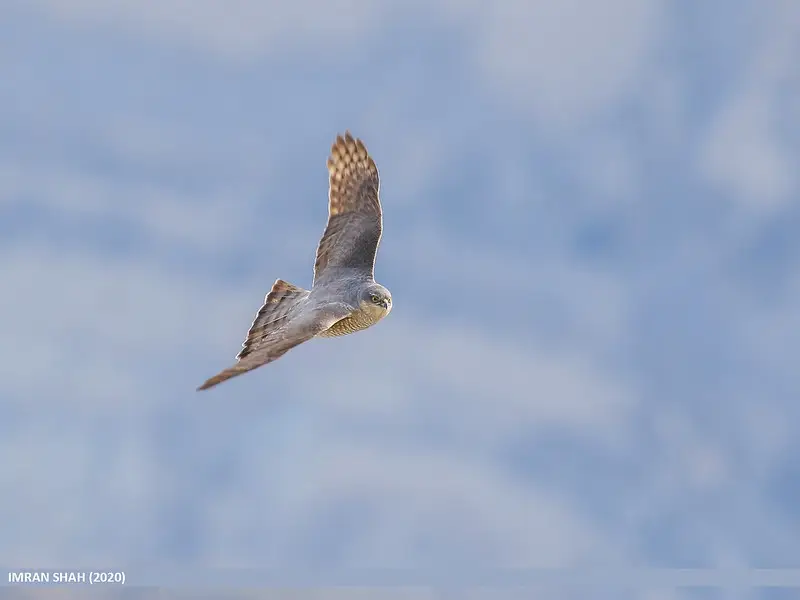

A frequent denizen of the German skies, the Eurasian Sparrowhawk is a spectacle of agility and precision. Comparable in size to a thrush, its slate-grey back contrasts beautifully with the barred underparts. While males are adorned with a reddish hue, females display a more muted brown.
In the dense woodlands, from the Thuringian Forest to the fabled Black Forest, the sparrowhawk’s swift, darting flights are a common sight as it chases after its preferred prey, often small birds. Its presence is further announced by its sharp, distinct calls echoing through the woods.
Germany’s rich folklore and legends often reference hawks and eagles, symbolizing freedom, vision, and power. The sparrowhawk, with its agility and speed, exemplifies nature’s unmatched precision and the delicate balance of ecosystems. As you tread the hiking paths or explore the historical towns, the sight of a sparrowhawk may just be the cherry on top of your German experience.
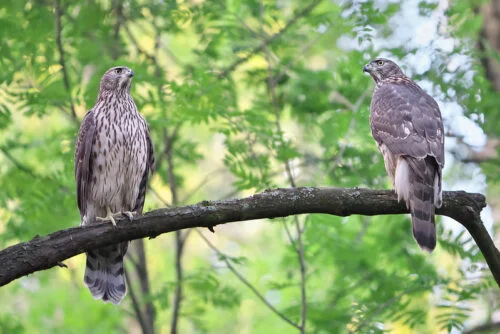
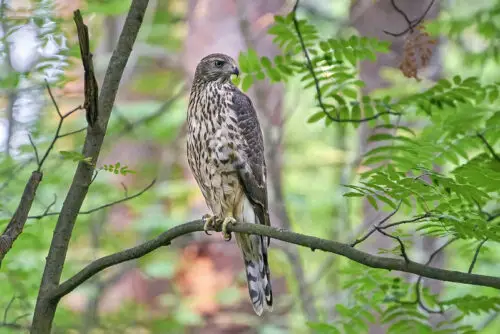
Echoing the tales of Teutonic knights and the valiant tales from the Brothers Grimm, the Northern Goshawk soars through the German skies, an avian guardian of the vast woodlands. Larger than the Eurasian Sparrowhawk, and equally as fierce if not more so, the goshawk truly embodies the spirit of the vast German forests.
This bird’s striking appearance boasts bluish-grey feathers on its upper body, juxtaposed with barred underparts. But perhaps the most arresting feature is its deep red eyes, which seem to hold the secrets of the woods. The young ones, though, wear a cloak of brown with piercing yellow eyes—only to grow into their mature plumage with age.
The call of the Northern Goshawk, a rhythmic “ki-ki-ki-ki”, resounds with unmatched clarity, particularly in the mating seasons, often echoing through places like the Bavarian Forest or the Harz Mountains. Their hunting technique is one of intense precision: with a burst of speed and agility, they dart through dense woodlands to ambush unsuspecting birds and mammals. From squirrels and rabbits to pigeons and crows, the goshawk’s menu is diverse and a testament to its prowess.
In Germany, the Northern Goshawk is a symbol of wild, untamed nature. Legends often speak of these birds as guardians of sacred groves, protectors of the natural world against the forces of darkness.
If you’re venturing through the woods in Germany, whether it’s the mystical Black Forest or the rolling hills of Saxon Switzerland, pause and listen. The whispering winds might just carry tales of the Northern Goshawk—Germany’s majestic woodland sentinel.
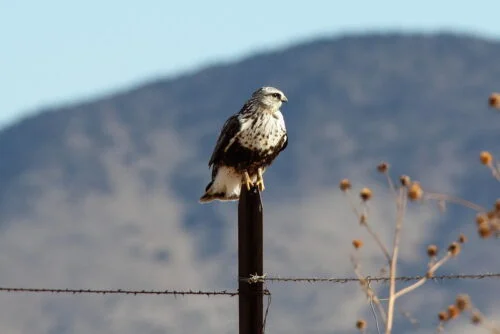
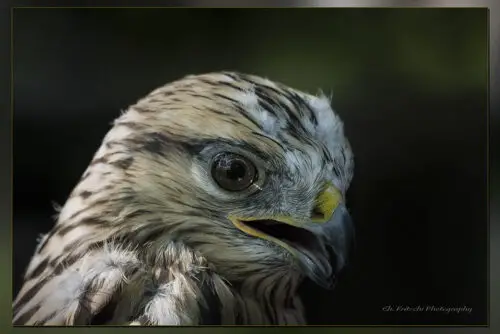
Beyond the rhythmic clangs of church bells in Bavaria and the silent, shadowy beauty of the Brandenburg woods, Germany’s skies are often graced by the ethereal presence of the Rough-legged Hawk, a bird that spins tales of distant icy lands and the undying spirit of nature.
Slightly larger than a buzzard, this raptor’s beauty is accentuated by its feathered legs, an adaptation tailored for its native chilly habitats. With a distinct plumage of dark patches contrasting a pale background, the hawk looks like it has draped itself in a patchwork cloak of snow-clad landscapes and dark winter nights. Adults bear the unmistakable mark of a dark band at the tail’s end—a signature feature setting them apart.
In Germany, these hawks can frequently be spotted over open terrains, gracefully hovering above the ground in their quest for prey, reminiscent of kestrels. Their diet predominantly comprises small mammals, with voles being a particular favorite. However, they’re not above diversifying their palate with an occasional bird.
Winter in Germany heralds the arrival of the Rough-legged Hawk, making it a seasonal spectacle much anticipated by bird enthusiasts and casual observers alike. Their migratory patterns, spanning from the Arctic tundras to the heart of Europe, stand as a testament to nature’s wonder and the resilience of avian life.
Legend has it in German folklore that the Rough-legged Hawk, with its Arctic origins, carries with it tales of the Northern Lights and endless winter nights. So, as you traverse the German countryside, from the vast expanses of the North Sea to the alpine beauty of Bavaria, glance skywards. Perhaps you might be lucky enough to witness the mesmerizing dance of the Rough-legged Hawk, a fleeting embrace of the German skies.





